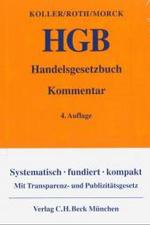- ホーム
- > 洋書
- > 英文書
- > Science / Mathematics
Full Description
The motivation for starting the work described in this book was the interest that Hewlett-Packard's microwave circuit designers had in simulation techniques that could tackle the problem of finding steady state solutions for nonlinear circuits, particularly circuits containing distributed elements such as transmission lines. Examining the problem of computing steady-state solutions in this context has led to a collection of novel numerical algorithms which we have gathered, along with some background material, into this book. Although we wished to appeal to as broad an audience as possible, to treat the subject in depth required maintaining a narrow focus. Our compromise was to assume that the reader is familiar with basic numerical methods, such as might be found in [dahlquist74] or [vlach83], but not assume any specialized knowledge of methods for steady-state problems. Although we focus on algorithms for computing steady-state solutions of analog and microwave circuits, the methods herein are general in nature and may find use in other disciplines. A number of new algorithms are presented, the contributions primarily centering around new approaches to harmonic balance and mixed frequency-time methods. These methods are described, along with appropriate background material, in what we hope is a reasonably satisfying blend of theory, practice, and results. The theory is given so that the algorithms can be fully understood and their correctness established.
Contents
1. Introduction.- 2. Motivation.- 3. Background.- 4. Time-Domain Methods.- 5. Harmonic Balance Theory.- 6. Implementing Harmonic Balance.- 7. Mixed Frequency-Time Method.- 8. Comparisons.- 9. Summary.- Appendix A. Nomenclature.- Appendix B. APFT Time-Point Selection.- 1. Matrix Formulation.- 1.1. Previous Work.- 1.2. Condition Number and Orthonormality.- 1.3. Condition Number and Time-Point Selection.- 1.4. Condition Number and Aliasing.- 2. Near-Orthogonal Selection Algorithm.- 2.1. Time-Point Selection.- 2.2. Constructing the Transform Matrix.- 2.3. APFT Algorithm Results.- Appendix C. Arc-Length Continuation.








